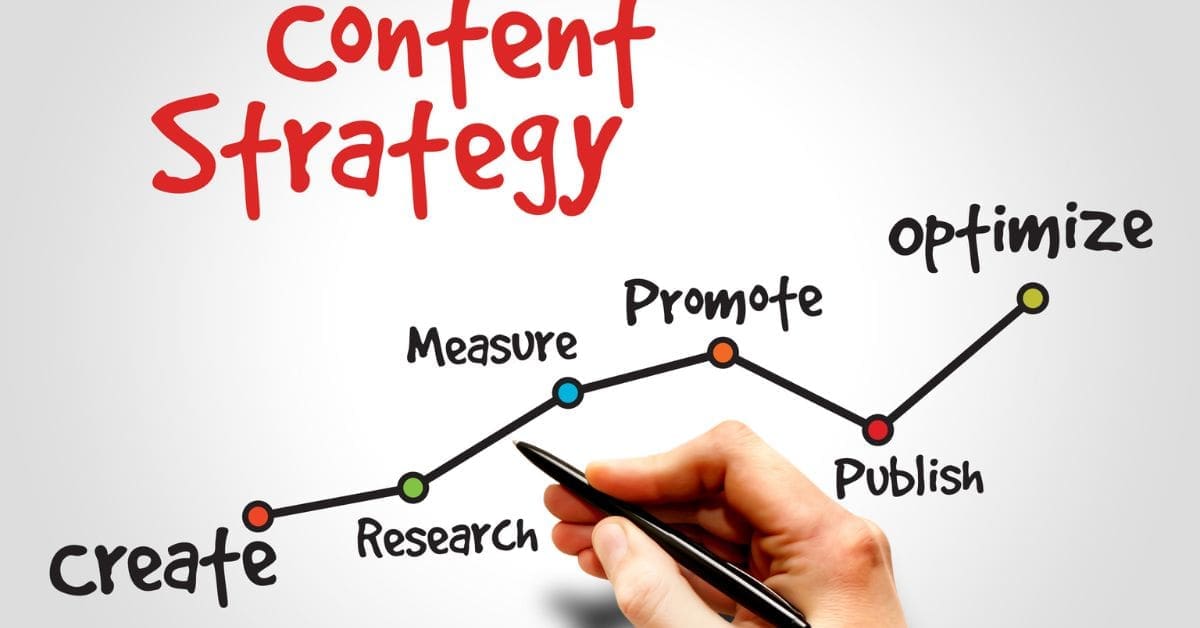It is hard to scroll through social media or browse the web today without encountering content marketing in some form or shape – whether it is an entertaining YouTube video, an educational blog post, or an insightful newsletter. Content marketing has become an extremely popular digital marketing strategy, especially for customer acquisition.
However, as a small business owner, you may wonder – is content marketing really an effective tactic for me? Can I even compete for attention against bigger brands with more resources?
It may be true that as a small company, you will face some challenges with leveraging content to reach potential customers. Creating great content requires significant time and skill. It can also be difficult getting traction for your content when you are just starting out. However, with the right strategic approach, content marketing can be just as effective for SMBs as larger companies.
The key is focusing on quality over quantity, identifying a specific audience to cater to, and clearly defining what goals you want to achieve with your content efforts. Whether it is increasing website traffic, generating inbound leads, improving SEO or building brand awareness – having clear objectives will allow you to craft targeted content that converts.
In this article, we take you through all the benefits and watchouts of content marketing along with the best practices when you are starting out. Let us find out if content marketing is the right fit for your growth plans as a small business owner.

Understanding Content Marketing
Content marketing refers to creating and distributing valuable, relevant content to attract and retain a clearly defined audience, driving profitable customer action. Unlike traditional product advertising, content marketing aims to provide consistent value to potential customers rather than just selling.
Effective content marketing provides tailored information and entertainment to buyers at every stage of the customer journey. During the initial Attention and Interest phases, blog posts, ebooks and videos can educate customers on solving their pain points. Further down the sales funnel, case studies and product comparisons can convince qualified leads who are evaluating options. Content can also provide relevant news updates, tips and best practices to customers who have already purchased to drive repeat sales.
From blogs to case studies, white papers to webinars and beyond – content can take many forms. However, they ultimately seek to build trust and establish the business as a top-of-mind expert for the customer. Rather than hard selling, they offer specific knowledge to attract qualified prospects already interested and ready to purchase products or services. For deeper examples of content types aligned to each AIDA funnel stage, check out our in-depth guide to performance marketing through the funnel.
Why Content Marketing Works for Small Businesses
While content marketing has become an indispensable strategy for large corporations, small businesses can also achieve fantastic results by leveraging content. The unique advantages of implementing content marketing for SMBs include:

Cost-Effective Customer Acquisition
Content marketing provides a relatively affordable way for small businesses to reach more customers. Rather than spending heavily on conventional advertising or cold calling, you can use inbound marketing tactics like blogging, social media marketing and SEO that scale well within modest marketing budgets. Additionally, quality content spreads organically, driving consistent traffic and prospects over time. By providing free, useful information to prospects at every stage of their buyer’s journey, content marketing ultimately nurtures them into qualified, sales-ready leads.
Building Trust and Authority
As per the 2023 State of Social Media Report, cultivating brand reputation and loyalty tops the priority list for business heads across sectors. This becomes especially critical to anchor consumer relationships amidst dynamic market forces. Great content allows small businesses to highlight their expertise and build trust, by solving specific customer pain points. Whether through educational eBooks, insightful webinars or case study examples – showcasing thought leadership establishes credibility and belief in the brand. This organic brand building makes customers more likely to purchase from you over generic competitors.
SEO and Discoverability
Optimised, valuable content also improves small businesses’ ability to get discovered online by their ideal customers. Quality content boosts search engine rankings so the right people can find you when they search for related topics in your niche. It also gets shared widely on social media, driving referral traffic.
Scalability
Since well-promoted content continues attracting relevant traffic from search and social sharing for months and years, it can keep generating leads even with no additional resources invested. The content asset pays dividends in the long run, making it ideal for small teams to punch above their weight.
Potential Challenges with Content Marketing
While content marketing clearly has some big advantages, small businesses can also face a few hurdles in getting it right. Being aware of these challenges upfront helps set proper expectations and gameplans to address them:
Producing Compelling Content Requires Significant Skill
Coming up with ideas and crafting content that resonates with audiences is part art, part science. It requires understanding which keywords will work for your target audience, strong research on the topics, and skills to creatively write the content so that it is simple yet compelling. Small company founders often lack the bandwidth or expertise to create content that cuts through the noise. Working with an external partner can help build a solid content engine.
Difficulty Building Initial Traction and Converting Visitors
When starting out, small businesses struggle to gain visibility and credibility amongst prospective customers who have plenty of established information sources. Without existing authority or followers sharing your content, conversion rates for driving traffic to your website and subsequent sales can suffer initially. Get credible third parties like influencers and complementary, but more established industry blogs and publications to help share or feature your content. This allows small businesses to tap into existing authority and communities in a niche, benefiting from their visibility, distribution and trust rather than just relying on their own organic reach. It serves as a force multiplier to reach and engage potential customers even without a pre-existing audience.
Needing Constant Innovation to Stand Out
In any competitive market, customers are flooded with content options. To grab attention amid information overload, small businesses need to keep innovating in their content style, topics and formats. Rather than playing it safe with one content channel or campaign, continual testing of fresh ideas is key to staying top-of-mind. Pushing creative boundaries can help resourceful small businesses punch above their weight class despite having smaller production budgets than enterprise competitors. Getting creative with interactive content formats, leveraging emerging platforms, and monitoring analytics for feedback allows small teams to continually optimise their appeal. Experimentation and agility are the best ways for savvy small companies to carve out their niche.
Measuring the Direct ROI of Content
Unlike advertising, it may be tricky determining the definitive ROI of content marketing, especially linking it to eventual sales. Small businesses have finite resources, so striking the right balance between long-term plays like content vs short-term lead generation tactics is vital.
How to get started with Content marketing?

Getting started on your content marketing strategy could have a few challenges, it is important to align the tactics to your business goals. Carefully implementing a thoughtful content marketing plan can set small businesses up for outsized impact. Here’s how:
1. Clearly Identify Your Target Audience and Niche
Rather than creating generic content, deeply understand your ideal customer through market research. Tailor and personalise content specifically to address the pain points and preferences of this niche. For example, a savvy local gym could discover that their most potential customers are busy working mothers. Rather than publishing generic fitness videos, it creates specialised content like ’10 At-Home Exercises Busy Mums Can Do In 15 Minutes’! This hyper-targeted persona-based advice and community building attracts loyal followers precisely from that ideal member niche. This focused expertise and relationship marketing helps the business stand apart amidst competition.
2. Set Measurable Goals and Relevant KPIs
As with any marketing initiative, clearly define what success looks like for your content. This includes metrics like website traffic, lead generation, audience engagement levels, sales impact or ROI goals. Tracking quantitative and qualitative key performance indicators ensures your efforts stay on track.
3. Favour Quality over Quantity
In a latest survey, 83% of marketers said that it is better to focus on quality rather than quantity of content, even if it means posting less often. Publishing one exceptional piece of content that gets widely shared, linked and cited will vastly outperform a dozen average ones. Allocate time and talent accordingly towards planning, drafting and optimising high caliber content.
4. Get Visual and Tell Stories
Well-produced visual formats like videos and infographics attract higher engagement across platforms. Telling compelling stories helps content marketing create an emotional impact on busy audiences, not just inform them. Use your content to build a connection with your prospects, that goes beyond transactions and product features.
5. Promote Content Across Multiple Channels
It is not enough to simply publish great content – aggressive promotion through email marketing, social media campaigns, influencer collaborations, outreach campaigns and more is key to driving an audience. Amplify content across every digital communications channel.
Finally, remember to stay flexible. Measure the performance of your content and keep optimising based on what is working. Continually experiment and iterate by watching how audiences interact with your content. Pivot from poor-performing tactics and double down on what delivers measurable conversions or ROI. When it comes to content marketing, agility is key!
Content marketing is certainly a viable growth strategy for most small and mid-sized businesses aiming to win more customers. With the right expectations, planning and execution, content provides a scalable way for smaller and newer companies to attract qualified brand advocates by competing on value and expertise rather than budget size.
Implementing the best practices around defining targets clearly, measuring effectiveness, continually optimising, aggressively promoting across channels and maintaining agility to test new content ideas is key. While competing with leaders in a niche may seem daunting, groundbreaking content innovations have helped countless young brands take marketshare despite resource constraints. To know more, read our case study on growing a new-age brand through content marketing or speak to our team.




